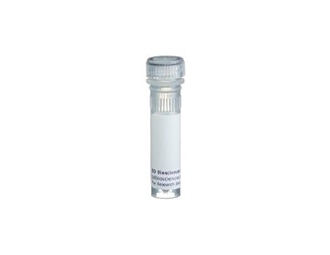-
Your selected country is
Middle East / Africa
- Change country/language
Old Browser
This page has been recently translated and is available in French now.
Looks like you're visiting us from {countryName}.
Would you like to stay on the current country site or be switched to your country?


Regulatory Status Legend
Any use of products other than the permitted use without the express written authorization of Becton, Dickinson and Company is strictly prohibited.
Preparation And Storage
Recommended Assay Procedures
This antibody has been tested during development for immunohistochemical (IHC) application by staining of acetone-fixed frozen rmouse spleen and thymus tissue sections with the antibody concentration of 0.5 -10 µg/ml. It's not tested for each lot for IHC application. Since applications vary, each investigator must determine dilutions appropriate for individual use.
Product Notices
- Since applications vary, each investigator should titrate the reagent to obtain optimal results.
- Please refer to www.bdbiosciences.com/us/s/resources for technical protocols.
- Caution: Sodium azide yields highly toxic hydrazoic acid under acidic conditions. Dilute azide compounds in running water before discarding to avoid accumulation of potentially explosive deposits in plumbing.
Companion Products

.png?imwidth=320)
The 1-1-2 monoclonal antibody specifically recognizes the Qa-2 MHC class Ib antigen, which is expressed at higher levels on mature T lymphocytes than on B cells. Its expression is upregulated in the late stages of T-cell maturation. Qa-2 is a 40 kDa GPI-linked cell surface molecule encoded by the Q5, Q6, Q7, and/or Q9 genes of the H-2 complex. A 39 kDa soluble form results from alternative splicing of the transcript. Although Qa-2 is nonpolymorphic, its level of expression on both T and B lymphocytes varies among inbred mouse strains. High expressors include strains carrying the H-2[b] haplotype low expressors include H-2[d] strains, and H-2[k] strains are Qa-2-negative.
Development References (3)
-
Gabor MJ, Godfrey DI, Scollay R. Recent thymic emigrants are distinct from most medullary thymocytes. Eur J Immunol. 1997; 27(8):2010-2050. (Biology). View Reference
-
Sharrow SO, Arn JS, Stroynowski I, Hood L, Sachs DH. Epitope clusters of Qa-2 antigens defined by a panel of new monoclonal antibodies. J Immunol. 1989; 142(10):3495-3502. (Immunogen). View Reference
-
Shawar SM, Vyas JM, Rodgers JR, Rich RR. Antigen presentation by major histocompatibility complex class I-B molecules. Annu Rev Immunol. 1994; 12:839-880. (Biology). View Reference
Please refer to Support Documents for Quality Certificates
Global - Refer to manufacturer's instructions for use and related User Manuals and Technical data sheets before using this products as described
Comparisons, where applicable, are made against older BD Technology, manual methods or are general performance claims. Comparisons are not made against non-BD technologies, unless otherwise noted.
For Research Use Only. Not for use in diagnostic or therapeutic procedures.
Report a Site Issue
This form is intended to help us improve our website experience. For other support, please visit our Contact Us page.